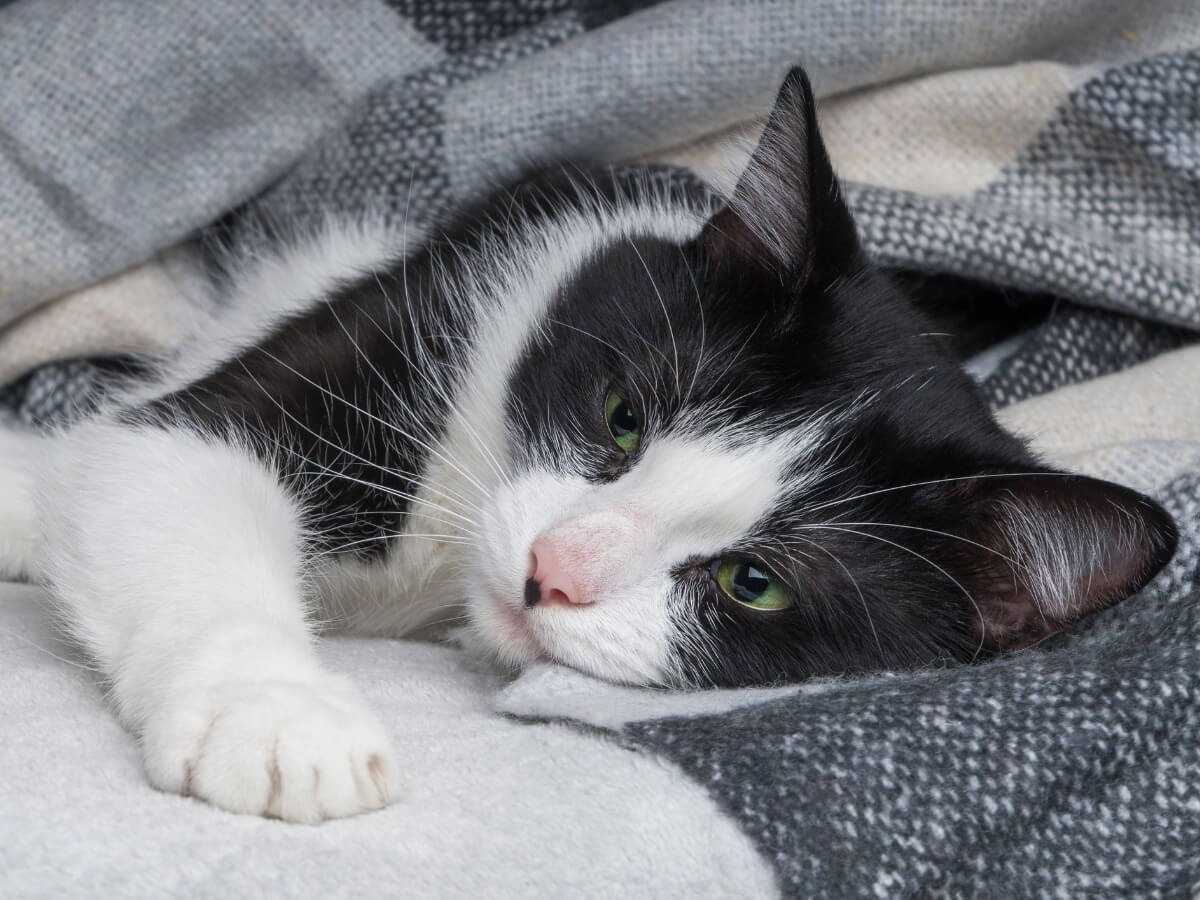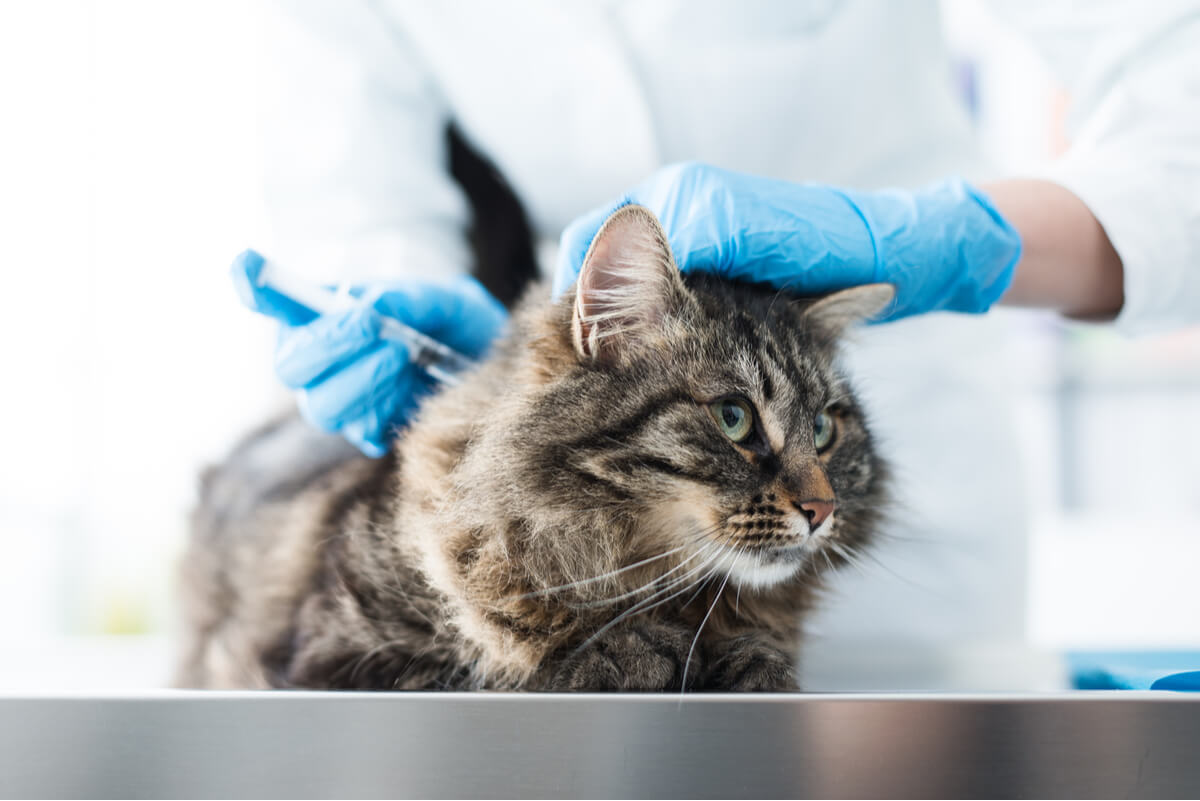First Aid for Cats: Everything You Need to Know


Reviewed and approved by the biologist Samuel Sanchez
To avoid mishaps and serious injuries, it’s important to always have a first aid kit and to know how to do first aid for cats.
First aid kits for a cat aren’t much different from those for humans. So, you can buy one designed for humans and then add other items for cats — or buy a kit specifically for felines. Here we’ll tell you what you need to put together a first aid kit and the basics you should know about first aid for cats.
A cat’s first aid kit
To create the first aid kit for your cat, you must first have a waterproof box or case and include the phone number and address of your local veterinarian, as well as the details of the nearest local emergency center that’s available 24 hours. It’s also a good idea to have all these numbers on your cell phone.

What should it include?
It’s important to check out a first aid book for cats before adopting a feline. It’s good to get familiar with the basics and quickly find out what you need to do in an emergency – so says Adventure Cats.
The kit should also carry your cat’s vaccination card or medical paperwork, absorbent gauze pads or rolls, micropore tape, wipes, scissors, lotions, and antiseptic sprays. The following list includes other essential elements:
- Cotton balls or swabs
- Hydrogen peroxide
- A saline eye solution and artificial eye gel to lubricate the eyes after rinsing
- Latex-free disposable gloves
- A rectal thermometer and petroleum jelly to lubricate the thermometer
Apart from these items, you should also include everything your vet prescribes and recommends, shampoo to remove contamination from the skin, forceps to remove stings, and a can of your cat’s favorite food.
It’s very important for you to regularly check the supplies in a cat’s first aid kit and replace them if they expire. Never administer drugs for humans and always consult with veterinarians before carrying out any emergency procedure.
First aid for cats
If you suspect that your cat is sick or injured, pay close attention to them. With burns, possible poisoning, or traffic accidents, the best option is to call the veterinarian for advice or take your cat to a specialized center immediately.
However, here we’re going to talk about several common injuries that you should treat quickly with basic first aid as you prepare to go to the vet. According to the experts at Cats Protection, they’re the following:
- In case of bleeding: Keep your cat calm and put a tight bandage near the injury to stop the blood flow. Press a pad firmly onto the wound and go and see the vet right away.
- Broken bones or tail injuries: Deal with any serious bleeding and place your cat in a well-padded carrier before visiting the vet.
- Burns and scalds: Put cold water on the burn at least 5 minutes before seeing the vet. Don’t apply creams or treatments and be sure to keep your feline warm and calm.
- Heatstroke: Although heatstroke is rare, it can occur if a cat has been trapped in a hot space for a considerable period of time. In this case, wet their coat with warm water and place them in a cool place before calling your vet.
- In case of stings: Remove the sting, bathe the area with water, apply a solution of baking soda (if it’s a bee sting) or diluted vinegar (if it’s from a wasp) and then apply ice to reduce the heat.
What to do if your cat is poisoned?
First of all, don’t panic. It’s a difficult situation and a quick response is important, but anxiety doesn’t help and it’ll interfere with the overall process. Collect everything calmly and take the object that you suspect has poisoned your cat with you, or any other element you think may be relevant.
ASPCA in Spain confirms that this is very helpful for the veterinarian or toxicologist, as they can then determine which poisons are involved in the emergency. In addition, collect any substance that your feline may have vomited or chewed, and put it in a sealable plastic bag.
If your cat is having seizures, is losing consciousness, or has difficulty breathing, don’t wait around and take them to the local vet immediately, or to the emergency veterinary clinic. If you notice that your cat has consumed something that could be toxic, don’t hesitate to seek help, even if you don’t notice any effects, as symptoms can appear several hours or even days later.
When to take the cat to the vet?
Although it’s often difficult to decide if the situation is an emergency, if your cat shows any of the following behavior, then we recommend that you take them to the vet. You could also call them before you leave to find out anything you need to do. Don’t forget that you should always take your cat to the vet at least once a year for check-ups. These signs are usually the most troublesome:
- The cat is weak or seems bored
- It has trouble breathing.
- The cat has difficulty maintaining balance.
- It has trouble urinating or defecating, or does so in an unusual way.

If you have pets at home, you should always be prepared. Another telephone number that you could include in your first aid kit is that of an animal poison advice center, if there is one in your country. As you can see, having a first aid kit and knowing about first aid for cats is essential for any cat owner.
All cited sources were thoroughly reviewed by our team to ensure their quality, reliability, currency, and validity. The bibliography of this article was considered reliable and of academic or scientific accuracy.
ASCPA. (s. f.). Qué Hacer si su Mascota es Envenenada. ASPCA. Recuperado 15 de julio de 2021, de https://www.aspca.org/nyc/recursos-para-personas-que-hablan-espanol/que-hacer-si-su-mascota-es-envenenada
Cats Protection. (s. f.). Cat first aid | Advice on cat health. Recuperado 15 de julio de 2021, de https://www.cats.org.uk/help-and-advice/health/cat-first-aid
Moss, L. (2016, 3 abril). What to include in your cat’s first-aid kit. Adventure Cats. https://www.adventurecats.org/gear-safety/include-cats-first-aid-kit/
This text is provided for informational purposes only and does not replace consultation with a professional. If in doubt, consult your specialist.